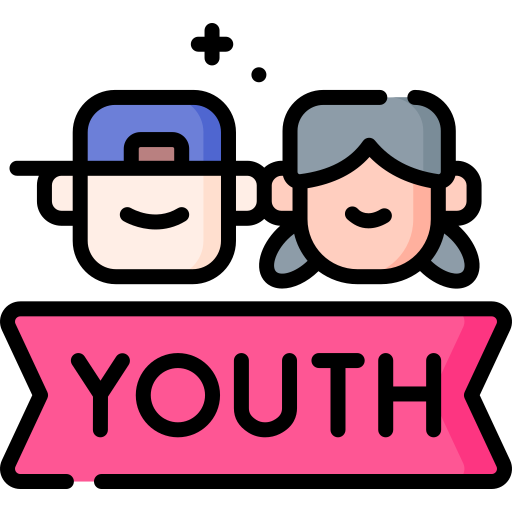Table of Contents
ToggleIntroduction to Living a Fuller Life
How to Do More in Your Life: Let’s be honest — life does tend to be a blur at times. You wake up, zoom through your agenda, manage duties, scroll a bit, crash, do it again. Next thing you know, days become weeks, and you find yourself asking: Am I really living, or merely existing?
That’s where the concept of living a fuller life comes into play.
Living life to the fullest isn’t about hustling 24/7. It’s not about hustling more, saying yes to all things, or pursuing success for success’s sake. It’s about doing more of the things that really matter, being more present, and building a life that truly feels good — not just looks good on the outside.
It’s about aligning your time, energy, and choices with your values. It’s about growing, learning, connecting, and finding joy in both the big milestones and the small moments.
This journey isn’t about perfection. It’s about progress — making small shifts that add up to something meaningful.
So if you’re ready to stop coasting through life and start living it with purpose, this guide is for you.
Let’s dive in.
What Does “Doing More” Really Mean?
It’s not about stuffing yTime is the one resource you can’t regain. Understanding how to use it wisely provides you with the ability to prioritize what’s most important to you — your career, relationships, or personal development.our schedule or multitasking yourself into burnout. Doing more means making intentional choices that align with your goals, values, and vision for life.
Why It’s Important to Maximize Your Time
Time is the one resource you can’t regain. Understanding how to use it wisely provides you with the ability to prioritize what’s most important to you — your career, relationships, or personal development.
Mindset Shifts That Make a Huge Difference
Fixed vs Growth Mindset (Expanded)

If there is a single mindset shift that can do it all, this is it.
What Is a Fixed Mindset?
A fixed mindset is when you think your intelligence, talent, or abilities are fixed. It sounds like:
- “I’m just not good at math.”
- “That’s just how I am.”
- “If I fail, it means I’m not cut out for it.”
This kind of thinking keeps you locked in a mental cage. You shirk challenges, are afraid to fail, and quit easily because you don’t see yourself getting better.
What Is a Growth Mindset?
A growth mindset, however, is the belief that you can get better through effort, time, and practice. It comes out more like:
- “I’m not good at this yet.”
- “Mistakes are how I learn.”
- “The more I practice, the better I get.”
This way of thinking makes you stay receptive to learning, challenging your limits, and experimenting with new things — which is what you need to do more in life.
The Science Behind It
Carol Dweck, a psychologist at Stanford, came up with the terminology fixed and growth mindset. According to her findings, individuals possessing a growth mindset consistently performed higher, dealt better with failure, and pushed farther in school, athletics, business — name it.
Why? Because they perceived that effort counts.
How to Change from Fixed to Growth Mindset
It doesn’t occur overnight, but you can rewire your brain to think in a new way. Here’s how:
1. Catch Your Inner Critic
Your brain may think, “I’ll never be good at this.”
Stop. Restate it: “I’m still learning. Every expert began somewhere.”
2. Use the Power of ‘Yet’
Put “yet” at the end of any limiting statement.
“I can’t do this… yet.”
This one little word leaves the door open for improvement.
3. Praise Effort, Not Achievement
Celebrate progress, not perfection. Did you show up? Try your best? Learn something? That is success.
4. Meet Hard Things Halfway
Instead of avoiding challenging things, dive in. Each challenge is an opportunity to become bigger.
5. Learn From Mistakes
Failure isn’t the end — it’s feedback. What will you learn? What will you do differently the next time around?
6. Be Around People Who Are Growing
Spend time with people who challenge themselves, who take risks, and who talk about how they learned — not what they accomplished.
Examples of Fixed vs Growth Mindset Thinking
| Situation | Fixed Mindset | Growth Mindset |
|---|---|---|
| Learning a new skill | “I’m just not talented.” | “I can get better with practice.” |
| Receiving criticism | “They’re just being mean.” | “What can I learn from this?” |
| Facing failure | “I’m not good enough.” | “This didn’t work — what’s next?” |
| Seeing others succeed | “They’re just lucky or gifted.” | “If they can do it, I can learn to do it too.” |
Why It Matters for Doing More in Life
Here’s the thing: You’ll never be bold enough to take risks, experiment with new things, or pursue grand aspirations if you think you’re locked in where you are.
The growth mindset opens the door to:
- Taking risks
- Being resilient
- Getting over self-doubt
- Starting over (and over, and over again)
When you begin to think you can change, get better, and grow — you quit holding yourself back.
Mini Challenge: Rewire Your Mindset This Week

Want to begin now? Try this:
- Choose Something you’ve been putting off because you “can’t” do it.
- Put it on paper with a growth mindset spin.
Example: “I have no idea how to do this, but I can learn it.” - Take a small action step in the direction of it today.
Do it every day, and eventually, you’ll literally be thinking — and living — differently.
The Power of Intentional Living
Stop drifting. Start deciding. When you live on purpose rather than autopilot, everything shifts. Intentional living makes ordinary days stepping stones to your larger objectives.
Time Management Strategies That Actually Work
Time Blocking for Better Productivity
Rather than a to-do list a mile long, assign your tasks a home in your calendar. Schedule time for concentrated work, rest, and even play.
Saying No Without Guilt
Here’s the reality: each “yes” is a “no” to something else. Learn to guard your time like it’s gold — because it is.
Goal Setting for Real Progress
Let’s be real — goal-setting is the simple part. Following through on them? Not so much. We all begin with the best of intentions… “New year, new me!” or “This time I’m serious!” But somewhere in the process, life gets in the way, motivation wanes, and those goals quietly disappear into the background.
The issue? Most goals are too broad, too ambitious, or not connected to what truly matters to you.
Set Goals That Really Stick
The secret to true progress isn’t making more goals — it’s making the right ones. And that means setting goals that are:
- Specific – Detailed and exact, not merely “get healthier” or “earn more.”
- Meaningful – Important to you, not something to make you sound cool.
- Actionable – You can divide them up into day-by-day or week-by-week tasks.
- Flexible – Things get new. So should your goals.
Use the SMART Method (But Make It Yours)
You’ve likely heard of SMART goals before (Specific, Measurable, Achievable, Relevant, Time-bound). And yeah, they work — but they’re just a starting point.
Ask yourself:
- Why do I want this?
- How will my life feel different when I achieve it?
- What’s one tiny action I can take today?
Focus on Systems, Not Just Results
Aims are the destination. But systems — the routines and habits — are how you arrive. Want to write a book? Don’t think about the end book. Think about writing 200 words a day. Want to get fit? Create the habit of turning up at the gym three times a week.
Progress occurs when small tasks build on themselves over the long term.
Monitor. Look back. Modify.
Report in with your goals every so often:
- Are they still in line with your values?
- What’s going right? What needs to change?
- Are you being consistent — or merely trying to be perfect?
True progress isn’t always a straight line. It’s a cycle of set, act, reflect, adjust.
Habits That Supercharge Your Life

The Power of Morning Routines
Your morning lays the foundation. Even 10 minutes of quality time (such as reading, writing in your journal, or stretching) can make your entire day different.
Stacking Habits for Greatest Impact
Put new habits in sequence with the old ones. For instance: “When I brush my teeth, I’ll go over my goals.” Habit piggybacking, sort of.
Energy Management Is as Essential
Let’s get one thing straight: Time management is fantastic, but if you’re always exhausted, drowsy, or mentally fatigued… even the perfect calendar won’t enable you to accomplish more.
That’s why energy management is an absolute game changer.
Consider this — you don’t necessarily require extra hours in a day, but you need more quality energy to actually make good use of those hours.
You’re Not a Robot. You’re Human.
You can’t grind nonstop. And even if you could, you’d burn out fast. Humans aren’t designed to be in “go mode” all the time.
The truth is, your energy fluctuates throughout the day — and learning to work with those natural rhythms instead of fighting them? That’s where the magic happens.
4 Key Areas of Energy You Need to Protect
- Physical Energy
Sleep, movement, and what you eat all directly affect your ability to focus and perform. . - Mental Energy
Your brain isn’t meant to multitask all day. Cut the noise. Say no more often. Build in space to think clearly without constant interruptions. - Emotional Energyp;
Toxic relationships, bad self-talk, or having stress trailing after you like a cloud will suck the energy right out of you. Set boundaries. Guard your peace. Cultivate gratitude and kindness to yourself.. - Spiritual Energy (even if you’re not religious)
This is about purpose — doing things that turn you on and align with your values. When you’re in sync with something that makes a difference, you automatically have more motivattion.
Practical Tips to Manage Your Energy
Refuel Daily
Don’t wait until the weekend to refuel. Do small things every day that energize you: music, nature, laughter, silence — whatever gets your tank full..
Find Your Energy Peaks
Are you a morning person? Night owl? Do your most critical work during your natural high-energy periods.
Take Real Breaks
Not scrolling breaks — real breaks. Get outside. Stretch. Breathe. Give your brain a chance to reboot.
Look Out for Energy Vampires
This can be individuals, routines, apps — anything that drains you without giving something back. Audit your day and make cuts.
Cut the Noise: Simplifying Your Life
Physical Clutter vs Mental Clutter
A cluttered room = a cluttered mind. Simplify your surroundings to increase mental clarity.
Digital Detox Tips
Unsubscribe, unfollow, uninstall. Organize your online life so it no longer sucks your attention.
Leverage Technology to Get Ahead
Apps That Help You Stay Organized
Utilize tools such as Notion, Todoist, or Trello to organize tasks, monitor goals, and remain focused.
Automation for Repetitive Tasks
Let technology take care of the mundane stuff — automate bill pay, email sorting, and reminders.
Create Systems, Not Just Goals
Why Systems Beat Willpower
Goals are single-shot victories. Systems are repeat habits that make achievement a certainty. Keep your focus on the process, not just the result.
Learn to Delegate and Work Together
You Don’t Have to Do It All Alone
Whether in the office or at home, learn how to share the burden. Ask for assistance. Outsource. Partner up. Teamwork multiplies your productivity.
Make Time for What Matters
Prioritize Purpose and People
Carve out room for the passions and relationships that energize you. Life’s too short for anything less.
Keep Learning, Always
Lifelong Learning as a Strategy
The more you learn, the more you can do. Read books, take classes, ask questions — growth never stops.
The Power of Reflection and Journaling
Do you ever feel like your days are racing by without actually going anywhere? That’s where reflection and journaling step in — two often-overlooked methods that can really take your productivity, mindset, and overall understanding to the next level.
Why Reflection Is Important
Reflection is essentially the pause button. It provides room for:
- Revisiting your progress: What went well? What didn’t?
- Reconnect with your goals:Are you still following the path that feels true?
- Adjust your strategy: Do you need to switch your strategy?
- Avoid burnout: Catch the signs before it’s too late.
Without reflection, you run the risk of repeating the same mistakes or functioning on autopilot. With it, you become more deliberate — and that’s where true growth occurs.
Journaling: Your Personal Success Manual
Consider journaling like a daily update with your future self. No need to get poetic or dramatic — just keep it real.
Here’s what you can write about:
- Gratitude – What worked out today?
- Lessons – What did I learn today?
- Wins – Big or small, what did I win?
- Goals – What’s ahead?
Five minutes a day will make a huge difference in terms of clarity, confidence, and motivation.
Quick Prompts to Get Started
- What am I proud of today?
- What’s sucking the energy out of me today?
- How can I do something differently tomorrow?
- What does “doing more” mean for me this week?
Let me know if you’d like a printable journal template or a 7-day reflection challenge — I’d be happy to add that next!
Keeping Progress and Wins in Mind
Check in every week. What did you do? What can you do better? And don’t forget to celebrate the little wins — they build momentum.
Definitely! Let us further develop the article with greater depth, doable strategies, and life-enhancing lessons. Here’s the continuation and expansion of the original content:
Begin with Self-Knowledge
Take a step back before you begin attempting to do more or adopting five new habits. Doing more begins with self-knowledge. What are your strengths? weaknesses? What fills you up? What depletes you?
Self-awareness is a sort of personal GPS. It indicates where you are and assists you in determining where to go next — without getting stuck in circles.
How to Develop Self-Awareness
- Maintain a journal — document what worked and what didn’t daily.
- Ask friends or mentors for constructive criticism.
- Notice how you feel following specific tasks or interactions.
The more you know yourself, the more on purpose (and productive) you’ll be.
Mastering the Art of Focus
We’re living the era of distraction — phone beep, social media, notifications, open tabs all day. You can’t “get more” done if your focus is splintered onto ten things.
Practical Tips to Taper Focus
- Employ the Pomodoro Technique: 25 minutes of quality work + 5-minute interval.
- Switch off unwanted notifications — yes, the lot.
- Work with a clean browser and desk. Disorder begets disorder.
- Practice mindfulness — even five minutes a day makes a difference.
Getting more done is usually about getting less done, with complete presence.
Create a “Not-To-Do” List
We all have a to-do list. But what about a not-to-do list? That’s where the magic really happens.
A not-to-do list contains:
- Things that aren’t worth your time.
- Time-wasters such as scrolling social media for hours.
- Toxic habits such as procrastination, perfectionism, or people-pleasing.
When you trim the fluff, you create room for the real thing.
Re-Design Your Environment for Success
Need to work out more? Leave shoes on the floor. Need to read more? Have a book on your pillow. The thing is, your environment quietly influences your behavior.
How to Optimize Your Environment
- Cut friction: Make the right thing easy.
- Add reminders: Sticky notes, vision boards, alarms.
- Switch up your setup: Rearrange your room, desk, or phone configuration.
Small changes create big differences.
Make a Vision Board
We all get stuck sometimes. A vision board can move you forward. It’s a visual reminder of what you want and why you’re doing all this.
Use pictures, quotes, goals, or even hand-drawn doodles. Put it where you’ll see it every day — like your bedroom wall, phone background, or workspace.
Why does it work? Because you can’t chase what you can’t see.
Surround Yourself with the Right People
You’ve heard it before: You are the average of the five people you spend the most time with.
Upgrade Your Circle
- Join mastermind groups or online communities.
- Follow people who inspire you.
- Let go of toxic relationships — even if it’s tough.
Energy is contagious. Make a good choice.
Monitor the Small Wins
Not all wins are promotion or getting a book published. Sometimes it’s just showing up. Answering the call. Not snoozing through it. The more you acknowledge and celebrate the small wins, the more you’ll be motivated to keep moving forward.
Do this: Each night, write down 3 things you did well. You will be shocked at how much you’re actually getting done.
Build Emotional Resilience
Life isn’t linear. There will be setbacks.
How to Strengthen Resilience
- Reframe failure as feedback.
- Practice gratitude — it reprograms your brain.
- Develop a go-to self-care ritual for bad days.
Remember, perfection isn’t the goal — it’s progress with grace.
Practice Deep Work Weekly
Once a week, block off a few hours for deep work — no distractions, no interruptions. Use this time for tasks that move the needle (like writing, strategizing, planning, or creating).
This is when the magic happens. You’ll make more progress in 3 hours of deep work than in 30 hours of distracted multitasking.

Don’t Just Do — Be
In a world obsessed with hustle, it’s easy to get caught in the trap of constant doing — chasing goals, checking boxes, and trying to stay busy just to feel productive. But here’s a truth most people overlook:
You are not a machine.
Doing more in life isn’t just about piling on more tasks. It’s about being present, aware, and connected to the moment you’re in.
What Does “Being” Look Like?
- Taking a deep breath and savoring your morning coffee — not just consuming it as you respond to emails.
- Sitting in silence rather than filling every quiet moment with sound.
- Feeling thankful for the progress you’re making, no matter how tiny.
- Permitting yourself to rest, to recharge, and to reflect.
Being is not about doing; it’s about being present.
Why It Matters
By slowing down to simply be, you:
- Reduce stress and anxiety
- Improve creativity and concentration
- Get reconnected to what really counts
- Avoid burnout from perpetual motion
This isn’t about slackin’ off or being ineffective — it’s about being solid. Because when you’re solid, your actions have greater significance, direction, and force.
FAQs
1. What is the first step to accomplishing more in life?
Begin with defining what “more” entails to you. Is it greater peace? More progress? More enjoyment? Pin down your values first before optimising everything.
2. How do I remain consistent in new habits?
Make it minute and connect the new habit with a current habit. Consistency trumps intensity — every single time. — every time.
3. Is it a good method to do more by multitasking?
Nope. It really makes you less productive. Do one thing at a time for better outcomes.
4. What if I’m overwhelmed with everything I have to do?
Simplify. Prioritize. Cut out what doesn’t work for you. You don’t have to do it all, just the good stuff.
5. How long does it take to get results from all this?
That depends on your goals, but with consistency, most people start noticing a difference within a few weeks. Trust the process..
- Introduction
- Tip 1: Set Clear, Achievable Goals
- Tip 2: Develop a Customized Study Plan
- Tip 3: Master Time Management
- Tip 4: Understand, Don’t Memorize
- Tip 5: Make Consistency Your SuperpowerMake Consistency Your Superpower
- Tip 6: Intelligent Note-Taking Techniques
- Tip 7: Use the Right Study Resources
- Tip 8: Practice Makes Perfect
- Tip 9: Have a Distraction-Free Zone
- Tip 10: Sleep Enough
- Tip 11: Eat Smart, Stay Fit
- Tip 12: Stay Motivated and Inspired
- Tip 13: Don’t Be Afraid of Failure
- Tip 14: Ask for Help When Needed
- Tip 15: Trust Yourself
- Conclusion
- FAQs










